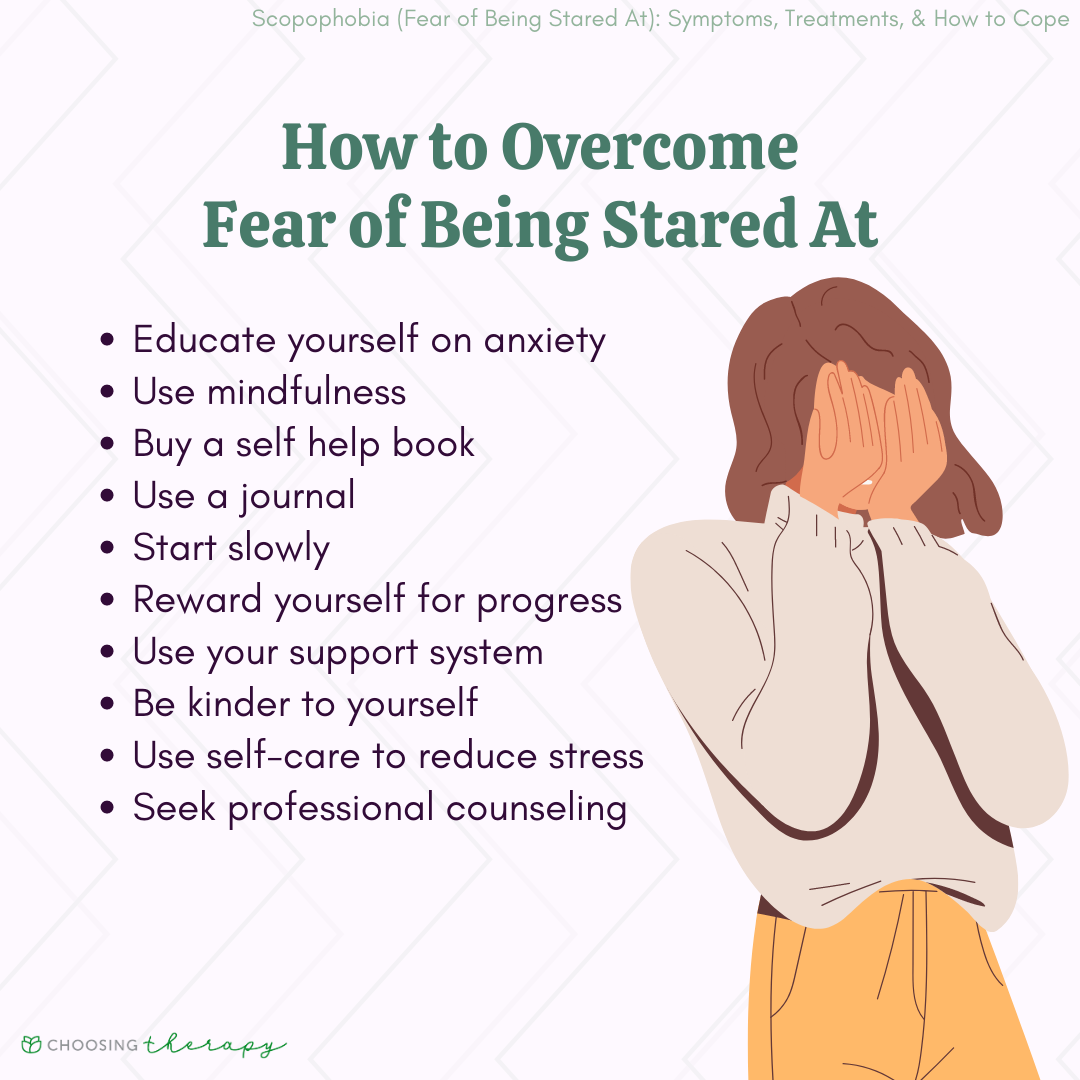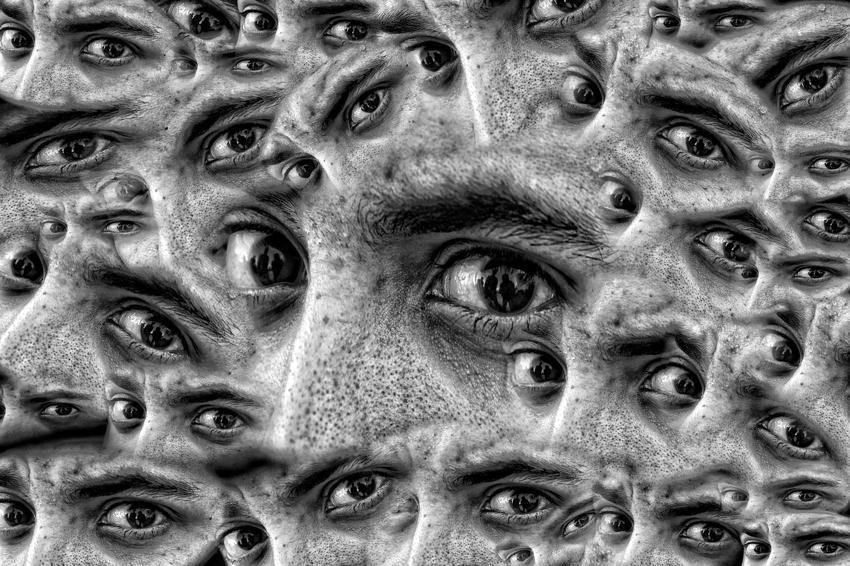What is Scopophobia?
Scopophobia is the fear of being stared at, which is often linked to social anxiety disorder or insecurities about one’s appearance or presentation to others. People with scopophobia may experience excessive worry, blushing, racing heartbeat, sweating, difficulty concentrating, restlessness, and even panic attacks.
This phobia can cause significant distress and impact a person’s daily life and social interactions. Understanding scopophobia and its symptoms is crucial for both individuals experiencing the fear and their loved ones who can offer support and assistance in seeking professional help.
By learning more about scopophobia, we can promote understanding and empathy towards those dealing with this phobia.
All About Scopophobia
Scopophobia is the fear of being stared at or watched. This condition can create intense anxiety and discomfort. Explore its causes and find effective solutions to manage and overcome this fear.
Scopophobia is a fear many might not know about. This fear makes people scared of being stared at. It can affect daily life and social interactions.
Definition Of Scopophobia
Scopophobia is the fear of being seen or stared at. People with this phobia feel anxious in social settings. They worry others are watching them. This fear can cause discomfort and stress.
Prevalence And Statistics
Scopophobia affects a small percentage of people. Studies suggest that about 0.5% to 1% of the population may have it. This fear is more common in people with social anxiety disorder. Both men and women can experience scopophobia. It often starts in childhood or early adolescence. Scopophobia can impact a person’s quality of life. Simple tasks like going to school or work can become challenging. Understanding scopophobia helps in finding solutions. Recognizing the signs is the first step. Seeking help from professionals can make a big difference. “`
Symptoms Of Scopophobia
Scopophobia, the fear of being stared at, manifests in various ways. The symptoms can be both physical and emotional. Understanding these signs can help in identifying and managing this phobia.
Physical Symptoms
People with scopophobia may experience a range of physical symptoms. These symptoms can be intense and overwhelming.
- Rapid heartbeat
- Sweating
- Shortness of breath
- Trembling
- Dizziness
- Nausea
- Chest pain
These physical reactions occur because the body perceives a threat. The fight-or-flight response is triggered, leading to these symptoms.
Emotional And Psychological Symptoms
Scopophobia also affects one’s emotional and psychological state. These symptoms can severely impact daily life.
- Intense fear of being watched
- Anxiety in public places
- Avoidance of social interactions
- Feelings of embarrassment
- Low self-esteem
- Depression
These emotional and psychological symptoms can lead to isolation. It is crucial to address these issues promptly.
Recognizing these symptoms is the first step towards seeking help. Therapy and support can significantly improve the quality of life for those with scopophobia.
Causes Of Scopophobia
Scopophobia is the fear of being stared at. This phobia can affect daily life and cause significant distress. Understanding the causes of scopophobia is crucial. Let’s explore the reasons behind this fear.
Scopophobia can develop due to various psychological and environmental factors, including:
- Social Anxiety Disorder – Many people with social anxiety experience scopophobia as part of their fear of social judgment.
- Past Trauma or Bullying – Negative experiences, such as bullying or public embarrassment, can lead to a fear of being watched.
- Paranoid Disorders – Some mental health conditions, like schizophrenia or paranoia, can include a heightened fear of being observed.
- Self-Consciousness – A high level of self-awareness or body image issues may contribute to scopophobia.
Genetic Factors
Genetic factors can play a role in developing scopophobia. If a family member has a phobia, you might be more likely to develop one too. Genetics can influence how we react to certain situations. This can lead to anxiety and fear responses. Studies have shown that some people are genetically predisposed to anxiety disorders. This includes specific phobias like scopophobia.
Environmental Triggers
Environmental triggers can also cause scopophobia. Traumatic experiences, such as bullying or public humiliation, can lead to this fear. Constant negative attention can make someone dread being watched. Social settings can trigger anxiety. This makes people feel like they are constantly under scrutiny. These experiences can create a lasting impact, leading to scopophobia.
Environmental factors are diverse. They include:
- Negative past experiences
- Social anxiety
- Cultural influences
Addressing these environmental triggers can help manage scopophobia. Understanding the root cause is the first step to finding a solution.

Credit: www.tranceformpsychology.com
Impact On Daily Life
Scopophobia can have a significant impact on daily life. This fear can affect various aspects of a person’s routine. From social interactions to professional settings, scopophobia can hinder one’s ability to function normally. Let’s explore how scopophobia affects daily life.
Social Interactions
People with scopophobia often avoid social gatherings. They fear being the center of attention. This can lead to social isolation. They might skip parties, meetings, or any event with many people. This avoidance can hurt relationships. Friends may feel neglected. Family members may not understand. Simple tasks, like shopping, can become stressful. The fear of being watched can make people feel anxious in public places.
Professional Life
Scopophobia can also affect one’s career. Public speaking is a common part of many jobs. For someone with scopophobia, this can be terrifying. They may avoid presentations or team meetings. This can limit career growth. Job performance may suffer. In some cases, people might even avoid job opportunities that involve public interaction. This can lead to job dissatisfaction and career stagnation.
Understanding the impact of scopophobia is crucial. It helps in finding effective solutions. Recognizing the signs can lead to better support for those affected.
Diagnosing Scopophobia
Diagnosing Scopophobia can be a challenging process. It involves understanding the fear of being stared at or watched. It is crucial to identify the symptoms and seek help. Accurate diagnosis ensures proper treatment and support.
Clinical Assessment
A clinical assessment is the first step in diagnosing scopophobia. A mental health professional conducts this assessment. They gather detailed information about the individual’s symptoms. Common symptoms include:
- Intense fear of being watched
- Avoidance of public places
- Physical symptoms like sweating and trembling
The professional may use structured interviews and questionnaires. These tools help to understand the severity of the phobia. They also rule out other possible conditions.
Self-assessment Tools
Self-assessment tools are also valuable. They allow individuals to evaluate their own symptoms. These tools are often available online. Some common self-assessment questions are:
- Do you feel anxious when people look at you?
- Do you avoid activities where you might be watched?
- Do you experience physical symptoms like a racing heart or nausea?
Individuals can use these tools to determine if they might have scopophobia. While self-assessment is helpful, it is not a substitute for professional diagnosis. It can guide individuals to seek further help.
Therapeutic Interventions
Scopophobia, the fear of being stared at, can be overwhelming. Many people suffer from it silently. Fortunately, effective treatments exist. Therapeutic interventions can help manage and reduce this fear. Two main therapies are Cognitive Behavioral Therapy and Exposure Therapy.
Cognitive Behavioral Therapy
Cognitive Behavioral Therapy (CBT) is a common treatment. It helps change negative thought patterns. These patterns often fuel scopophobia. A therapist guides the patient. They work together to identify these thoughts. Then, they challenge and replace them with positive ones.
CBT involves regular sessions. Each session builds on the last. Patients learn coping strategies. They practice these strategies in real-life situations. Over time, anxiety decreases. Confidence grows. The fear of being stared at lessens.
Exposure Therapy
Exposure Therapy is another effective treatment. It involves gradual exposure to the feared situation. The process starts with less intense scenarios. For example, looking at a photo of someone staring. Gradually, the intensity increases.
The therapist supports the patient throughout. They ensure the patient feels safe. The goal is to desensitize the person to the fear. Repeated exposure reduces the emotional response. This therapy can be very effective. Over time, the fear of being stared at diminishes significantly.
Medications For Scopophobia
Scopophobia, the fear of being stared at, can be debilitating. For many, medication offers relief from its symptoms. Medications help manage anxiety and improve quality of life. Let’s explore the medications commonly prescribed for scopophobia.
Anti-anxiety Medications
Anti-anxiety medications reduce nervousness and worry. They are often prescribed for scopophobia. Common options include benzodiazepines and beta-blockers. Benzodiazepines like Xanax and Valium provide quick relief. They calm the nervous system. Beta-blockers like Propranolol control physical symptoms. They manage heart rate and trembling.
These medications are effective for short-term use. Long-term use requires medical supervision. They can be habit-forming. Always follow your doctor’s advice. Understand the side effects before starting any medication.
Antidepressants
Antidepressants treat both depression and anxiety. They are useful for chronic scopophobia. Selective serotonin reuptake inhibitors (SSRIs) are common. Examples include Prozac, Zoloft, and Lexapro. They balance serotonin levels in the brain. This helps improve mood and reduce anxiety.
Antidepressants take longer to show effects. Patience is necessary. Side effects may occur, like nausea or dizziness. Regular check-ups with your doctor are important. Adjustments to dosage might be needed for the best results.

Credit: www.choosingtherapy.com
Self-help Strategies
Scopophobia, the fear of being stared at, can be quite distressing. While professional help is crucial, there are self-help strategies that can assist in managing this fear. Below, we explore a few effective techniques to help cope with scopophobia.
Mindfulness And Relaxation Techniques
Mindfulness helps in staying present and aware. It can reduce anxiety related to scopophobia. Practices like deep breathing, meditation, and progressive muscle relaxation can ease the mind.
- Deep Breathing: Take slow, deep breaths. It calms the nervous system.
- Meditation: Focus on your breath or a mantra. It centers your thoughts.
- Progressive Muscle Relaxation: Tense and then relax muscle groups. It reduces physical tension.
These techniques can be practiced daily. They help in building resilience against anxiety.
Support Groups
Joining a support group can offer a sense of community. It helps to share experiences and strategies with others who understand.
| Support Group Type | Benefits |
|---|---|
| In-person Groups | Face-to-face interaction, build real connections. |
| Online Forums | Convenient, access from anywhere, anonymity. |
| Social Media Groups | Large communities, diverse perspectives. |
Support groups provide a platform to learn new coping mechanisms. They also offer emotional support and validation, making the journey less isolating.
Preventing Scopophobia
Scopophobia, the fear of being stared at, can be overwhelming. Understanding its roots helps in prevention. Early intervention and healthy coping mechanisms play a crucial role. Let’s explore these strategies in detail.
Early Intervention
Early intervention is key in preventing scopophobia from escalating. Recognizing the signs early can make a big difference. Children showing signs of extreme shyness or fear of attention need support.
Here are some early intervention strategies:
- Educate about scopophobia to create awareness.
- Encourage open communication about their feelings.
- Provide positive reinforcement for small social interactions.
- Seek professional help if symptoms persist.
Healthy Coping Mechanisms
Implementing healthy coping mechanisms helps manage scopophobia effectively. These strategies promote emotional well-being and resilience.
Consider the following coping mechanisms:
- Deep breathing exercises to calm the mind.
- Practice mindfulness and stay present.
- Engage in regular physical activity to reduce anxiety.
- Build a support system of friends and family.
- Use positive self-talk to boost confidence.
By focusing on early intervention and healthy coping mechanisms, individuals can manage scopophobia better. These steps lead to a more confident and less anxious life.
Frequently Asked Questions
What Is Scopophobia?
Scopophobia is the fear of being stared at. It can cause anxiety and discomfort in social situations.
What Causes Scopophobia?
Scopophobia can be caused by past traumatic experiences, social anxiety, or underlying psychological conditions.
How Is Scopophobia Diagnosed?
A mental health professional can diagnose scopophobia through patient history and psychological assessments.
What Are The Symptoms Of Scopophobia?
Symptoms include intense fear of being watched, anxiety, sweating, and avoidance of social situations.
Conclusion
Scopophobia can feel overwhelming, but understanding it is the first step. Knowing the reasons behind this fear helps in managing it. Simple techniques can make a big difference. Practice relaxation exercises. Seek support from friends and professionals. Take gradual steps to face your fear.
With patience, you can improve. Remember, many people have overcome scopophobia. You are not alone. Stay positive and persistent in your journey. Your efforts will pay off.eficial in overcoming scopophobia. Remember, scopophobia is a common concern, and there is no shame in seeking support. With the right strategies and guidance, it is possible to overcome the fear of being stared at and regain confidence in social situations.




